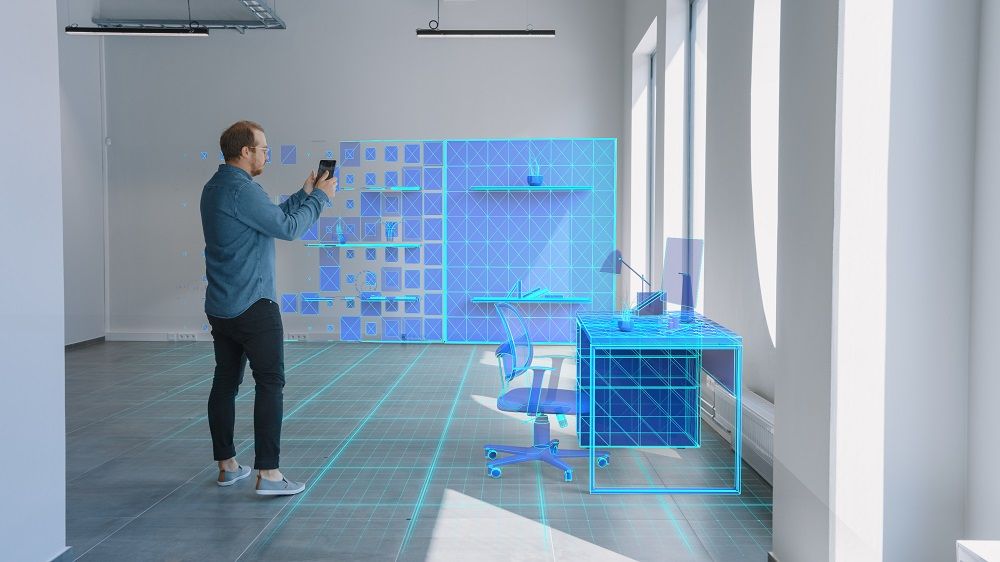Telling the Story of What’s Possible With Digital Twin Simulations

Digital twins powered by simulation allow for rapid design and fast evaluations of iterations, making it a powerful tool for AV integrators and clients.
Audiovisual (AV) integrators are skilled professionals who specialize in designing and implementing systems to create unique and immersive experiences. They combine various components, such as audio, video, lighting and control systems to deliver seamless and tailored solutions. AV integrators’ first step is to deeply understand the client’s vision and goals. This involves extensive communication and consultation to grasp the specific requirements, desired outcomes and target audience.
The next step is to thoroughly evaluate the physical space where the experience will take place while considering factors such as room dimensions, acoustics, lighting conditions, and architectural elements. This assessment helps determine the optimal placement of audio and video equipment and any necessary environmental modifications or enhancements.
At this point, you are thinking, “Of course, that is exactly what we do.” AV integrators are naturally creative, have in-depth knowledge of the latest audiovisual technologies and solutions, and have the vision to see how the equipment will integrate into the space. But, here lies the problem — most clients are not visual, and the majority of decision-makers do not understand how the equipment functions. Historically, integrators use siloed modeling software to try and help clients experience what they are about to buy. In addition, they provide 3D renders, speaker coverage maps, lighting plots, etc. Wouldn’t having one model that demonstrates all the systems working together be nice?
Solution: Digital Twin SimulationsWhat is a digital twin? A digital twin is a virtual representation of physical objects, processes or systems which allows analysis and prediction of its behavior. Simulations play a pivotal role in providing valuable insights and preventing unforeseen problems. Digital twins powered by simulation allow for rapid design and fast evaluations of iterations. Engineers and designers can virtually test and validate different design concepts, assess performance and make informed decisions before installing the physical system.
This iterative approach accelerates the project development cycle, reduces costs and increases the project’s likelihood of success. A digital twin aligns all of the stakeholders to a common expectation. How often have you heard, “I thought it was going to look different” or “This is not what I was expecting”? An accurate digital twin solves this problem.
Simulations inside of a digital twin are only possible with real-time rendering. Real-time rendering enables the creation of immersive and interactive experiences that captivate the client’s attention. Rendering in real time allows immediate feedback and interactivity, whether in video games, virtual reality (VR), augmented reality (AR) or architectural visualizations.
In architectural visualizations, real-time rendering enables the adjustment of materials, lighting conditions and environmental factors, giving clients a sense of the project’s atmosphere and ambiance. Clients can explore virtual environments, manipulate objects and witness their actions and decisions reflected instantaneously.
This level of responsiveness enhances user engagement and creates a sense of realism and presence. Real-time rendering also facilitates collaboration, as multiple stakeholders can review and provide feedback in real-time, After all, who wouldn’t want to see their space before it is built?
A few example of simulations:
- Critical viewing distance from anywhere in the space
- Auralization
- Space planning of furniture and fixtures
- DMX, ARTNET, and architectural lighting
- Projection design
- Playback of content on displays
- Field of view from camera positions
The value of digital twins extends way past audiovisual simulations. Once a digital twin of a space is created, it can be used for multiple applications such as metaverse activations, facility management, event planning, AR activations, training and interior design. This opens the door for other revenue generating opportunities outside of traditional AVL systems sales and support, and keeps the relationship sticky with the client.
Source: Commercial Integrator


